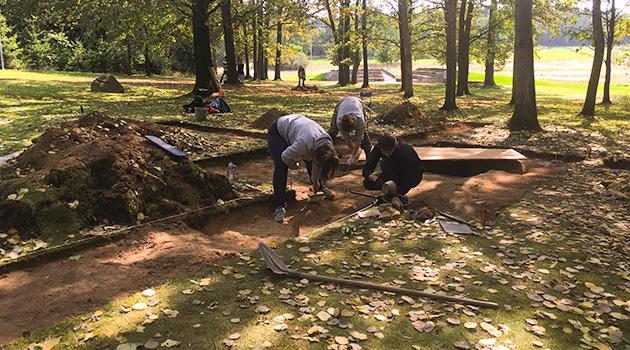Czech archaeologists find remains of yet another WWII-era concentration camp for Roma

Archaeologists have found the remains of yet another World War II-era concentration camp for Romani people, this one in the Czech city of Liberec; after the Romani prisoners were sent to their deaths in other camps, French prisoners of war were then imprisoned there as well. Petr Brestovanský, an archaeologist working at the site, told the Czech News Agency (ČTK) on 10 November that the brick floors and foundations of the building have been unearthed.
The camp existed in a location where the Liberec Regional Authority wants to build a new regional headquarters for emergency response services, at a bend in the intersection of Jablonecká and Kunratická Streets. From conserved documents it was known that the internment camp for Romani people had been located there, and the archaeological finding has now confirmed it.
In 2016, news server Romea.cz reported on the four concentration camps for Romani people that were located on the territory of Liberec during the war. “I have been discussing the construction of the emergency responders’ headquarters with representatives of Romani initiatives for that reason. Currently human lives are being saved from that location, which is an interesting kind of symbolism. One component of the project will also be to commemorate the historic local tragedy associated with that place,” reads a press release issued by the Liberec Regional Council Member in charge of culture, monument preservation and tourism, Květa Vinklátová (Mayors for the Liberec Region – Starostové pro Liberecký kraj).
Romani people were imprisoned in the camp from 1941-1943. “There were more than 130 of them at least,” Ivan Rous of the North Bohemian Museum in Liberec, who is an expert on the wartime history of the region, told ČTK on 10 November.
The Romani people who were held in the camp were forced to work on building the nearby housing estate of Králův Háj. “They usually stayed in the camp a year or two. They were here until they were sent to the big concentration camps, the women were sent to Ravensbrück and the men were sent to Buchenwald and to Auschwitz. They murdered them there, nobody survived,” said Rous who, along with members of the Association of Romani Representatives of the Liberec Region, installed seven crosses at the former concentration camp site several years ago.
The crosses commemorate seven child prisoners of the camp who were murdered. After the Romani people in the region were considered to have all been murdered during the war, the camp’s use changed.
Until the end of the war the Germans held French prisoners of war there to work in the nearby quarry. Rous estimates dozens of French citizens were held there.
The concentration camps for Romani people in Liberec have long been ignored by the academic literature even though they comprise a significant element in the history of the region and of ethnic Roma in Bohemia. Investigations into the camps were initiated by a brief mention in a brochure entitled “Liberec in the Shadow of Nazism”, which stated that one such camp for Roma had been located in the part of the city where Broumovská, Jablonecká and Kunratická Streets intersect.
The first details about the issue of concentration camps for Roma in Liberec did not come to light until the testimony of Mr Rado Faltis in 2010, who clarified the former camp’s location and led investigators to a Ms Růžena B., a Romani community member who was a direct eyewitness to those events and who had the enormously good luck to survive the war along with her parents and siblings. During the excavation work, archaeologists managed to find the remains of a building that was 35 meters long and almost 10 meters wide.
“There was an addition built onto it that measured 8 x 10 meters,” Brestovanský said. He said the archaeologists had excavated an area of 220 meters for exploration down to a depth of three meters in some places.
The archaeologist considers the finding to be significant even if part of the building’s foundations were destroyed previously during the construction of a steam pipeline. “I think there are not very many such places in the country,” he said.
The Liberec Region has spent more than CZK 424 000 [EUR 17 000] on the archaeological survey. From cadastral maps, Brestovanský ascertained that particular bend in the road to Kunratice had been occupied just by meadowland as far back as 1843 and was never built on until World War II was underway.
After the war, not much use was made of the site of the former concentration camp. Around 1950 municipal waste began to be transported there, including construction waste generated by the building of the nearby housing estate.
“That entire plot of land is one big garbage dump,” the archaeologist said. The building’s foundations were discovered beneath the landfill.
